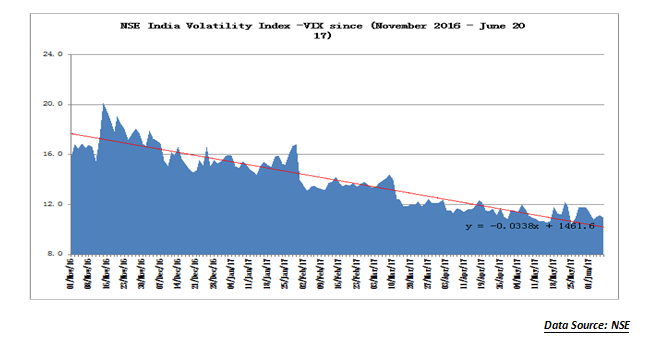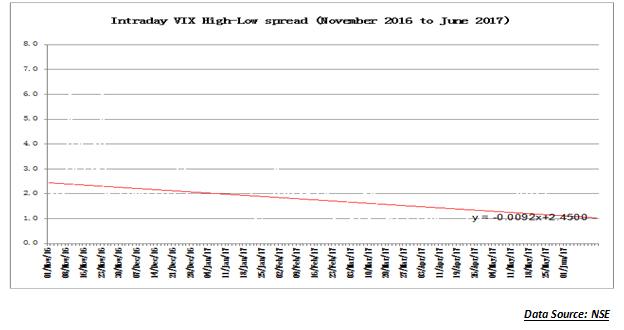
As investors it is normal to equate volatility with risk. That is in fact the basis of stock market analysis. Normally, a stock with a high beta or high standard deviation of returns is considered to be more risky compared to another stock with a much lower volatility. But a very strange trend is being seen in the markets across the world, and India has been no exception. The volatility has been falling consistently over the past few months and the volatility shows no signs of rebounding. Does that mean that equity markets across the world, including India, have suddenly become a lot safer? Or, does it mean that there are some hidden dangers lurking which investors are not exactly aware of? Firstly, let us understand volatility through the concept of Volatility Index (VIX).
VIX or the volatility index is also known as the fear index. Normally, a high level of the VIX indicates a heightened degree of risk in the market. Normally, there has been a negative relationship between the VIX and the Nifty in India. The concept of VIX was originally propounded by the Chicago Board of Trade (CBOT), which is one of the premier global derivative exchanges. The Indian VIX which is calculated on the NSE is largely a derivative of the CBOT VIX.
To drive home our point of the falling VIX in India let us chart the VIX since November 2016. That was the time the VIX was quoting at around the 23 levels and subsequent to Trump’s election the VIX has been on a consistent downtrend.

As the chart above indicates, the VIX on the NSE has clearly been on a downtrend. The slope of the curve as captured by the equation also clearly indicates that the relationship is getting progressively negative. In fact, since the demonetization announcement and the commencement of the Trump trade, the VIX in India has virtually halved. Let us also look at the intraday volatility of the VIX…

Apart from the VIX, we have also plotted the intraday volatility of the VIX over the same period. Intraday spread has been defined as the spread between the high and low values of the VIX. So it not only the VIX that has been consistently falling on the NSE but even the intraday VIX spread has been showing a downward trend. What this means is that; not only is the volatility in the market coming down but also the volatility of this volatility is coming down. To put it in simple words, investors are beginning to assume that the equity market is an extremely safe place to invest money. These charts indicate that people are almost beginning to assume that they are unlikely to lose money in equities. What are the implications of this?
In the risk hierarchy, equity has also been considered the most risky investment; well above the risk entailed in money markets or in debt. When investors begin to assume that equity is almost riskless, it could have some long term implications. Here are a few of them…
The moral of the story is that once cannot equate low levels of volatility with low risk in the market. Remember, low level of VIX is about perception and perceptions can change quite fast. Ironically, low levels of risk create the complacence in investors to take on additional risk and that typically tends to unravel in the form of a violent disruption in the market. The message for investors and traders is to stick their broad trading and investment plan and not get carried away into assuming on greater risk. That may be a good starting point!
Published on: Jun 22, 2017, 12:00 AM IST
We're Live on WhatsApp! Join our channel for market insights & updates